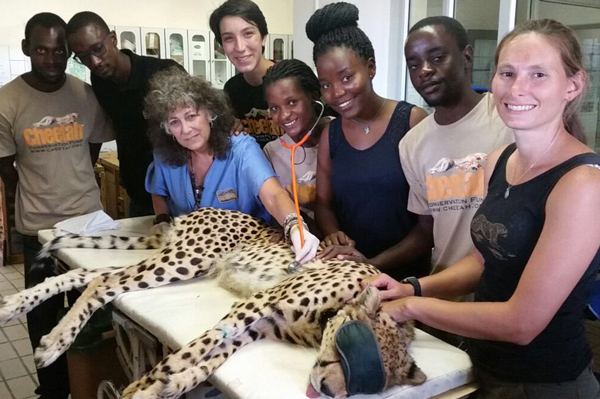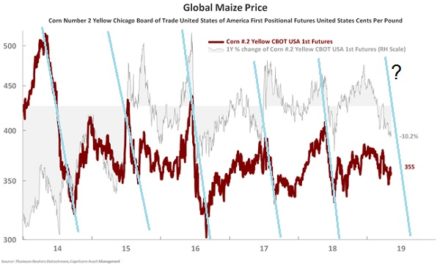
In the cheetah we celebrate speed and elegance but this animal can be much more than just a large wild cat

If the Scandinavians can breed mink in large numbers for the fur trade, what stops us from breeding cheetahs for the lucrative pet trade?
This topic is a hornet’s nest, but I believe there are some opportunities in breeding exotic species especially if the market already exists and threatens the existence of wild populations.
Cheetahs are renowned for their elegance and speed. This makes them a prized item in rich Arab households across a handful of countries spread across the Arabian peninsula and as far east as Pakistan. But the existence of the cheetah in the wild is severely threatened for a whole host of reasons, chief of which is conflict with humans. However, even in the wild they are killed by lions and hyenas and their cubs are particularly prone to malnourishment and dehydration. Even honey badgers kill the cubs when they encounter them. Despite its public image as an impressive large carnivore, they are in fact docile, timid and easily chased away.
During the past two weeks we received two items from the Cheetah Conservation Fund based here in Namibia. The first was the conviction of two cheetah smugglers in Somaliland, and the second was about the current efforts to save two emaciated cheetah cubs, also confiscated in Somaliland.
A snippet from these items caught my attention: It is estimated that around 300 live cheetahs are smuggled through the Horn of Africa every year for the Arab market!
Let’s take a step back and examine the possibility of a legal, regulated trade in cheetahs bred in captivity. When protected against humans and wild competitors, cheetahs are fairly prolific breeders. A tabby will typically produce a litter of three to four cubs after a relatively short gestation, but only one or maybe two will reach young adulthood and independence. Even then, after five years, only about 10% of the initial offspring will still be alive.
An infant cheetah has very little commercial value in the smuggling trade because it is so feeble but once it has reached the age of about nine months, its value jumps astronomically. From what I could establish, a young cheetah in good health can easily fetch about US$10,000 and there are more than enough willing buyers to feed the smuggling trade. So it’s very similar to diamonds. The commodity is rare, highly prized and chased by a large enough pool of money and eager buyers to keep illicit diamonds alive and well, flourishing all over Africa. The same with cheetahs.
Only, with cheetahs, the supply is even more limited, precarious and unpredictable leading to a situation where a smuggler will go to great lengths to steal cheetah cubs to try and get his meagre slice from this lucrative trade.
Then why not breed them? In Namibia we can literally produce thousands of cheetahs per year. They will all be in good health and they can even be exported legally with a CITES certificate. The best of all, we would not need dedicated conservation groups like the Cheetah Conservation Fund to do the breeding, they will only be responsible for monitoring, collecting, quarantine and certification.
Monetize the commodity and those people with means will dive into it. In short, build a profit into cheetah breeding and Namibia’s farmers will fall over their feet to supply the Cheetah Fund with captive-bred young, healthy cheetahs for export.
This removes the incentive for the illegal trade and hopefully, as more and more Arab families get their prized trophy cat, the prices will moderate somewhat, with the long-term intention that after ten or twenty years, tame cheetahs will be so abundant, nobody will care to bother even a single wild animal.
This will create a revenue stream, part of which can go back to conservation of wild populations and the protection of individuals who still surface in the smuggling chains, but eventually it will completely destroy the smuggling value chain, hence making it obsolete to deal in these animals.
You may ask, where will the farmers get the first breeding stock from? Obviously from the wild population but then at least there is a motive to keep the cats alive and not shoot them on sight. This brings me to the vexing question exactly how many cheetahs are there in Namibia.
This figure varies anything from 3000 to 20,000 individuals. I know the Cheetah Fund is fond of quoting the lower estimates while the farmers are only too keen to tell you there are thousands. Going by my own experience and having witnessed personally the hundreds of cheetah skins in barns and homesteads, I believe the actual figure lies between 10,000 and 12,000 individuals.
Nowhere are cheetahs plentiful but they are also not rare, at least not in Namibia. They are only difficult to spot and even harder to shoot because they are so wary and elusive. But they are relatively easy to catch in a cage trap, and when that happens, nine out of ten times they are destroyed. And if it is a tabby, the cubs perish as well.
The essence is that the first impact of establishing a breeding stock, to my mind, will be minimal. It will be more a matter of shunting the animals that would have been killed, over to a new track where they will be kept in enclosures and properly cared for because of the high value of their offspring.
Think about it. Even if we breed and export only one thousand cheetahs, which in our environment is nothing, it will still generate TEN BILLION Namibia dollar at current prices. We only need conservation authorities to think outside the box, and then the director of the Cheetah Fund will never have to try and save a cheetah cub in a Somaliland hotel room ever again.
If we can grow 30 tonnes of perlemoen per year and send this to Hong Kong, there is nothing that prevents us from breeding a couple a thousand cheetahs per year, and send them to Arabia.












































